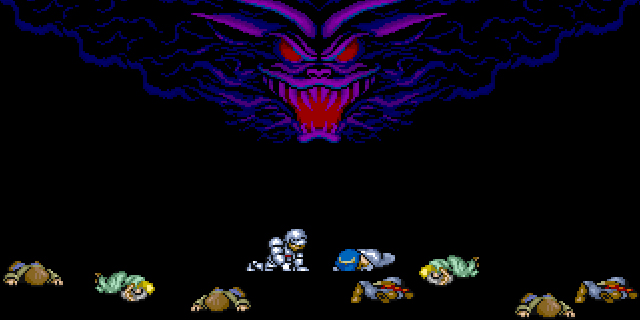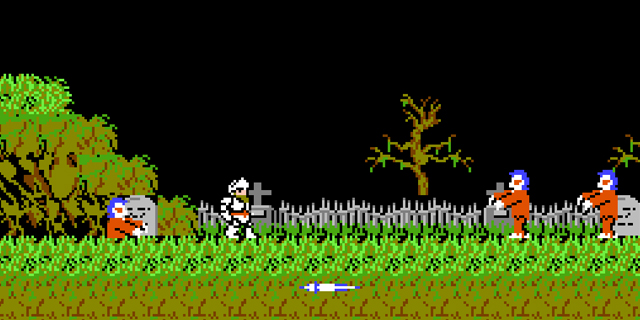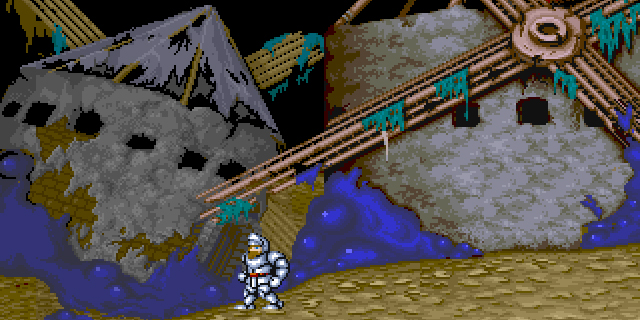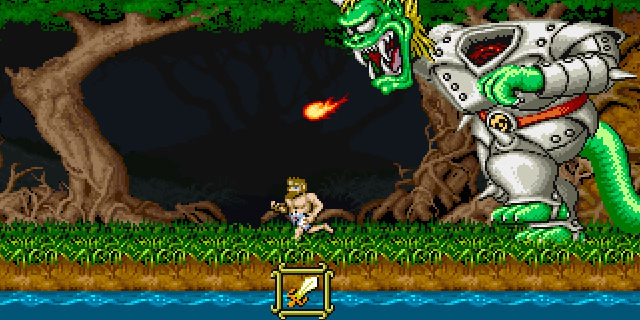
Ghosts’n Goblins has gotten this reputation of being an incredibly difficult game over the years. While it certainly doesn’t even approach the level of games like Mushimeshama or Beatmania, it’s true that the game is punishing, and it requires a very different mindset from the usual platformer. While most allow the players to rush through the stages once beaten once with some skill and memorization of the patterns, trying to do the same in Ghosts’n Goblins is impossible, thanks to the heavy randomization of enemy spawns and movements. Every step, jump and attack must be planned in advance, and trying to ignore even the lowliest of the enemies is a sure way of getting killed.
But there’s more than just randomness behind the difficulty.
Back during the development and public playtesting stages of the original Ghosts’n Goblins, Tokuro Fujiwara (Resident Evil, Commando), head designer for the game, was known to constantly take the game out for reprogramming. Safe spots? Killing the ghosts with a circular motion? He couldn’t allow that! So every time he saw the players do something easy or unexpected, blam! He changed the programming to make it harder.

The best example of this is the sudden upward movement after Red Amer dives against the player. It’s obviously forced by the hand of the designer to counteract a very basic player action that all of us have tried, only to be thwarted once the miniboss’ movement stopped mid-air. You may not realize it, but after cursing the developer, you may find your actions were a bit of a cheat.
Unfortunately, this meddling and experimentation on what was still a very early platformer gave the game a certain roughness, which, coupled with the stiff movement reminiscent of Donkey Kong more than Castlevania, makes it not quite right, like an early draft of what a really great game should be.
That really great game is its sequel, Ghouls’n Ghosts, released into arcades five years later.

Using the powerful CPS-1 hardware and development experience gained not just by Fujiwara, but the medium as a whole, Ghouls’n Ghosts is, more so than a sequel, a re-imagining of the concepts introduced by the original. Keeping the fixed-length jumping and adding attacks both above and below, the game feels carefully orchestrated, balancing the higher number of enemies with more space for the player to jump around and the differences in height now offer important choices when dealing with enemies instead of being practically another path.
Setting the nail-bitting first stage aside, the difficulty is somewhat lower, and there are fewer situations in which you run from an enemy, only to get killed when you realize it’s a little bit faster than you expected. You have more tools and feel more in control, which can be a double-edged sword. It softens the constant blows and input of credits you sustain while playing, keeping you on board for some more punishment.

The world and backgrounds have been stylized ,and the purple goo covering the prosperous lands of the kingdom add to the comically-grotesque setting more than anything made in the original. The game now feels like a cohesive whole instead of a mash-up of concepts, and there’s no point in the game where the enemies congregate for no logical reason.
The previously silly-looking bosses have gotten an upgrade, making them scarier but also funnier, and seeing an armored Cyclops take out his own head to shoot at you with it is such a combination of horror and comical concepts that I’ve been sent to the grave for a brief, unexpected laugh. But that’s what the game is about, isn’t it?



















